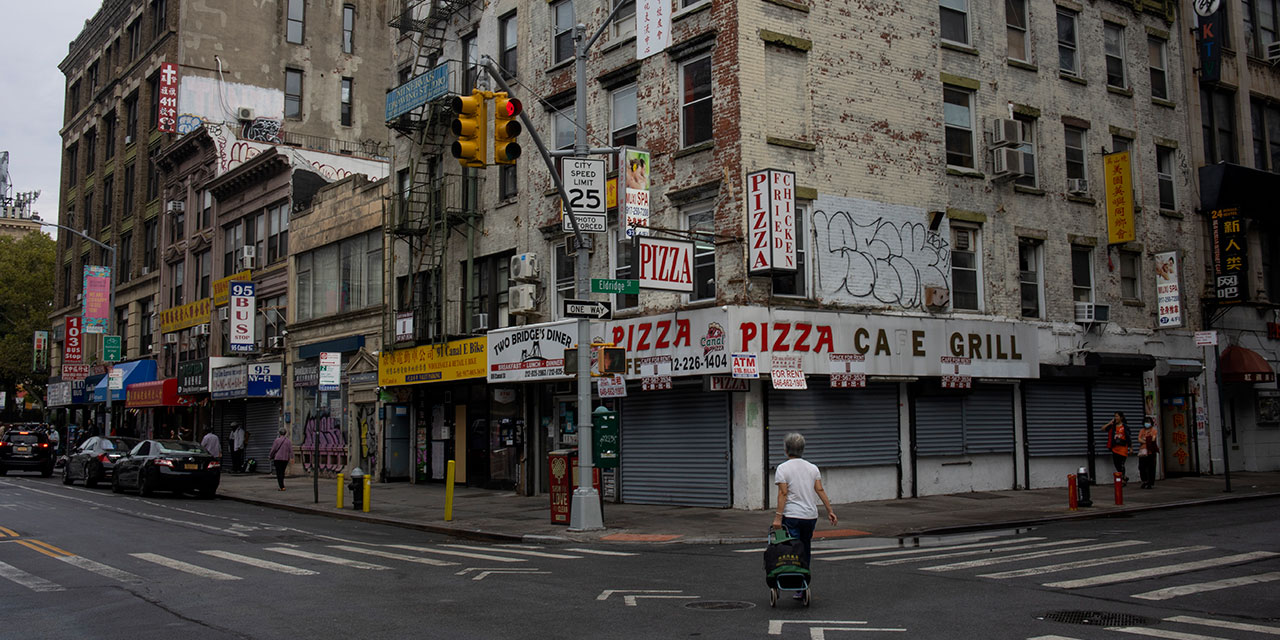
The world of New York City housing policy punditry is small, and I’m glad to share it with Howard Slatkin and Sarah Watson. They serve as executive director and deputy director, respectively, of the Citizens Housing and Planning Council—a nonprofit that advocates for sensible housing and land-use policies in a city that often has too little of either.
In their latest op-ed, “NYC’s ‘Antisocial’ Housing Problem,” Slatkin and Watson thoughtfully highlight the deteriorating condition of the multifamily rental housing that most low-income New Yorkers rely on—and how public policy is accelerating that decline. They write: “Housing policies and programs have focused on keeping rents low without adequately providing for the ongoing operation and management of housing. . . . It is antisocial to systematically underfund the management and upkeep of affordable housing. Buildings deteriorate, and health and safety hazards spread, all to the detriment of residents.”
Finally, a reason to check your email.
Sign up for our free newsletter today.
That’s true, and the authors are also right to criticize the familiar non-solutions: nonprofit ownership of rental housing, public ownership, and “rent freezes.” But they sidestep two key questions: How did the city get into this mess? And who will share the financial burden of getting out of it?
The primary culprit remains our old bugaboo, the Housing Stability and Tenant Protection Act of 2019 (HSTPA). With federal aid shrinking and local and state budgets strained, both fiscal and physical realities will eventually force Albany to revisit the law.
In 2003, at the urging of Governor Pataki, the legislature liberalized rent stabilization, leading to the deregulation of many units in affluent parts of the city. Even those that remained rent-regulated often had rents close to market rates.
But the HSTPA, as I wrote in 2024, “eliminated most of the routes that landlords could use to raise rent-stabilized apartment rates close to market levels: vacancy allowances, vacancy decontrol, and luxury decontrol. It also greatly curtailed permitted rent increases for Major Capital Improvements (MCIs) and Individual Apartment Improvements (IAIs).”
The economic impact of the HSTPA—removing the financial incentive for private investment in rent-stabilized housing—was felt most acutely in low-income areas where deregulation hadn’t occurred. In many of these neighborhoods, rent increases for stabilized units had already been constrained in practice by the low incomes of residents. The city’s most recent survey, from 2023, found a median household income of $80,000 citywide, but just $60,000 for the 960,700 households in rent-stabilized units. Incomes were below $25,000 in 26 percent of rent-stabilized households, with another 17 percent earning between $25,000 and $49,999.
At one time, even owners in low-income neighborhoods had an incentive to invest in buildings to attract higher-income tenants, allowing for rent increases through turnover. The HSTPA eliminated that incentive, both by sharply reducing turnover and by ensuring that, even when it happens, rents can’t rise.
This problem has been worsened by the Rent Guidelines Board’s recent unwillingness to set rent raises at the inflation rate. The subsequent withdrawal of capital from the rent-stabilized housing stock in turn leads to disinvestment and financial distress.
How can the city escape this mess? Slatkin and Watson write that New York needs “realistic rent-setting and financial planning for buildings,” but they don’t mention whose job that is.
In the first instance, that’s the responsibility of the Rent Guidelines Board. Mayors need to stand back and allow the board to do its job responsibly and raise rents with inflation—as occurred, uncharacteristically, this year. The system of politicized appointments and raucous public hearings is designed to thwart such responsible behavior.
Slatkin and Watson also argue that solving the crisis will require “making effective use of all available government funds for affordable housing,” along with “broad-based financial assistance to put a potentially large number of buildings back on a sound financial footing.” That’s even trickier.
New York City has historically relied on federal aid to cover such costs, especially rent vouchers that bridge the gap between what tenants can pay and what the federal government considers a fair-market rent. We don’t yet know how budget negotiations will proceed in Washington. But the president, notably, has proposed substantial cuts in aid for housing programs.
“[W]aiting for the roof to cave in is not a solution,” Slatkin and Watson write. Alas, that’s standard operating procedure in Albany. Ultimately, the problem of “antisocial housing” lands back at the state legislature’s doorstep. By passing HSTPA, lawmakers effectively made rent stabilization permanent, likely hoping they’d never have to revisit it. But mounting financial distress in the rent-stabilized stock, shrinking federal aid, and the inability of the city or state to cover capital needs all point to one conclusion: the legislature will eventually have to re-engage.
The legislature won’t tackle this issue in 2026, an election year. But whoever takes office as governor in 2027 will need to work with lawmakers to ease the most punitive provisions of HSTPA.
That includes lifting the ban on rent increases upon vacancy and restoring the ability to recover renovation costs for new tenants. Lawmakers should also bring back “non-eviction” co-op and condo conversions, which allow rent-stabilized tenants to remain in place. The next mayor and incoming housing commissioner can help by speaking candidly about the financial pressures facing rent-stabilized landlords.
“Fixing our antisocial housing problem is a matter of math, not politics or ideology,” Slatkin and Watson observe. Sooner or later, the math will force reluctant politicians to act.
Photo by Andrew Lichtenstein/Corbis via Getty Images
City Journal is a publication of the Manhattan Institute for Policy Research (MI), a leading free-market think tank. Are you interested in supporting the magazine? As a 501(c)(3) nonprofit, donations in support of MI and City Journal are fully tax-deductible as provided by law (EIN #13-2912529).
Source link

















